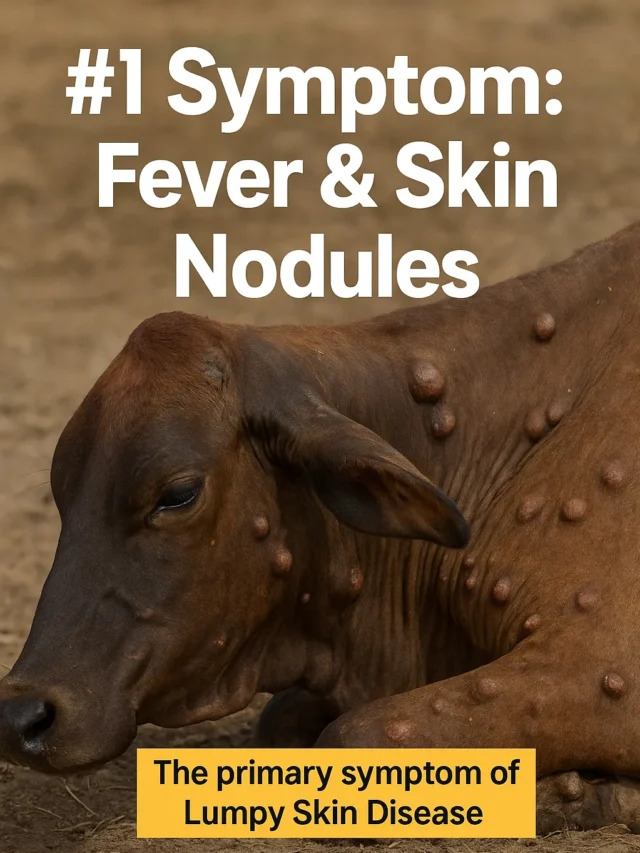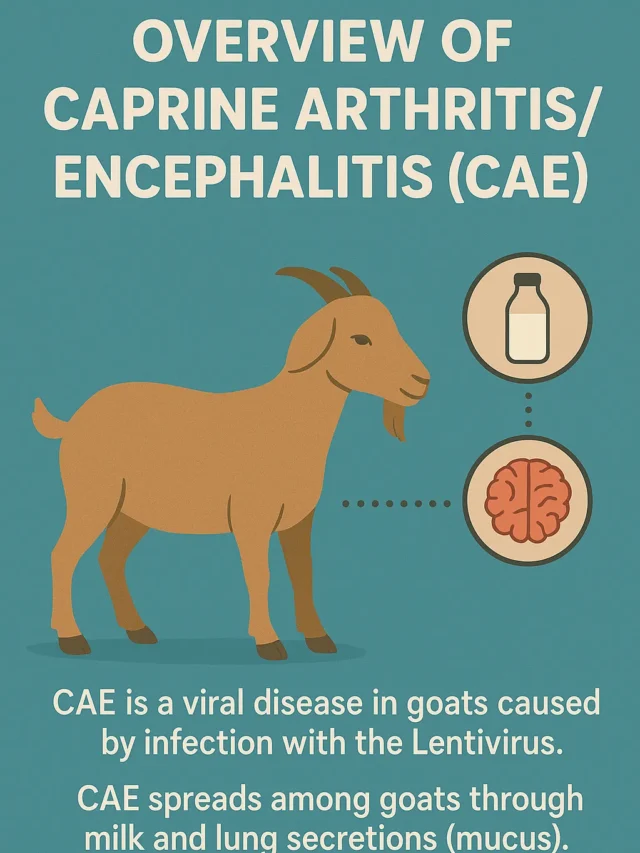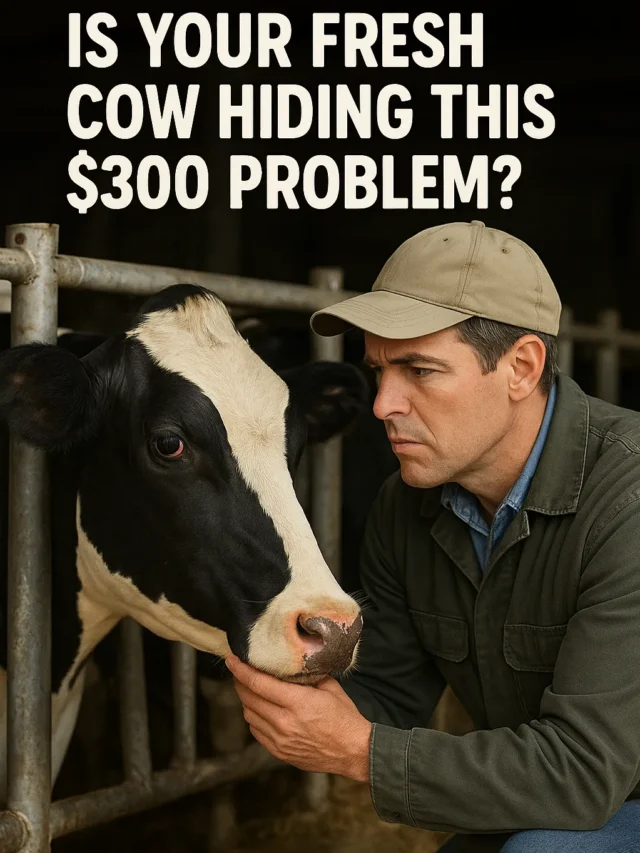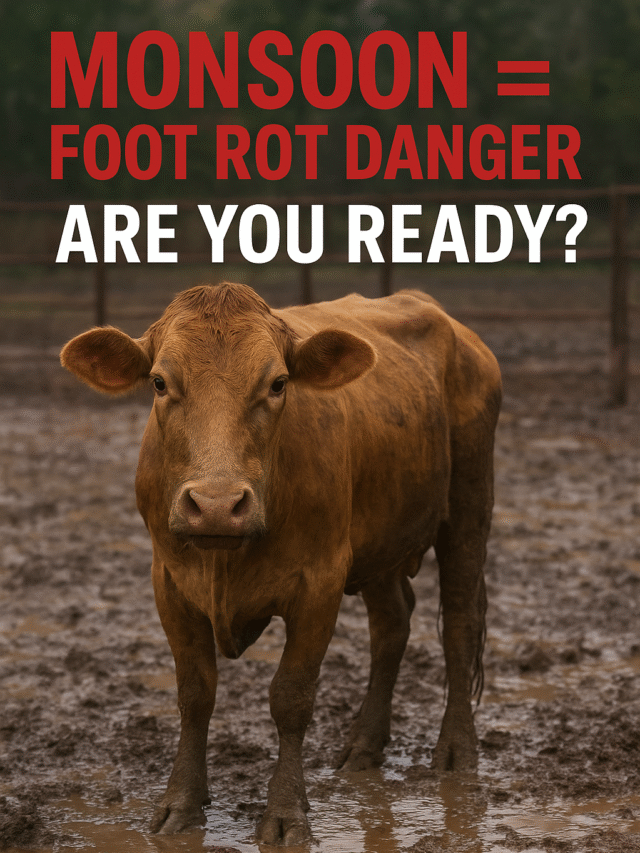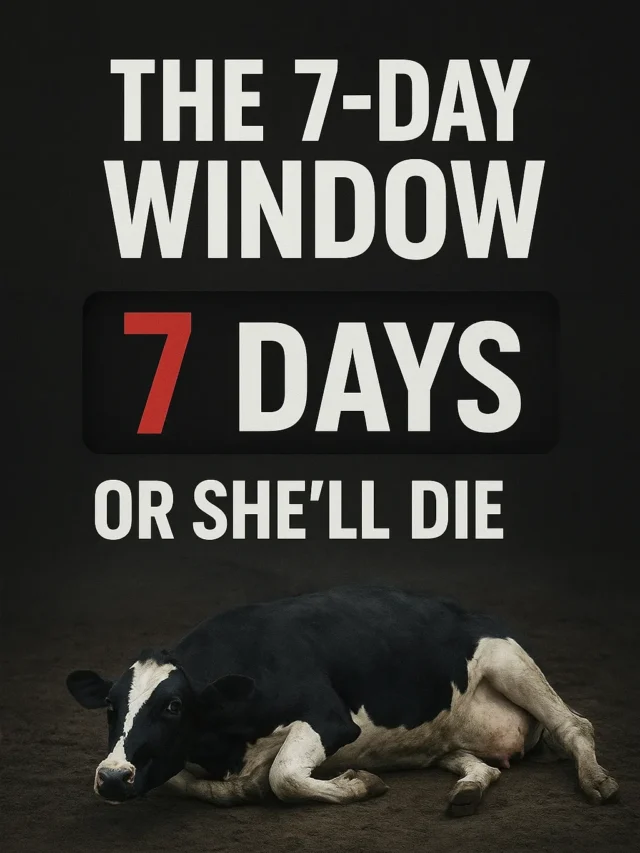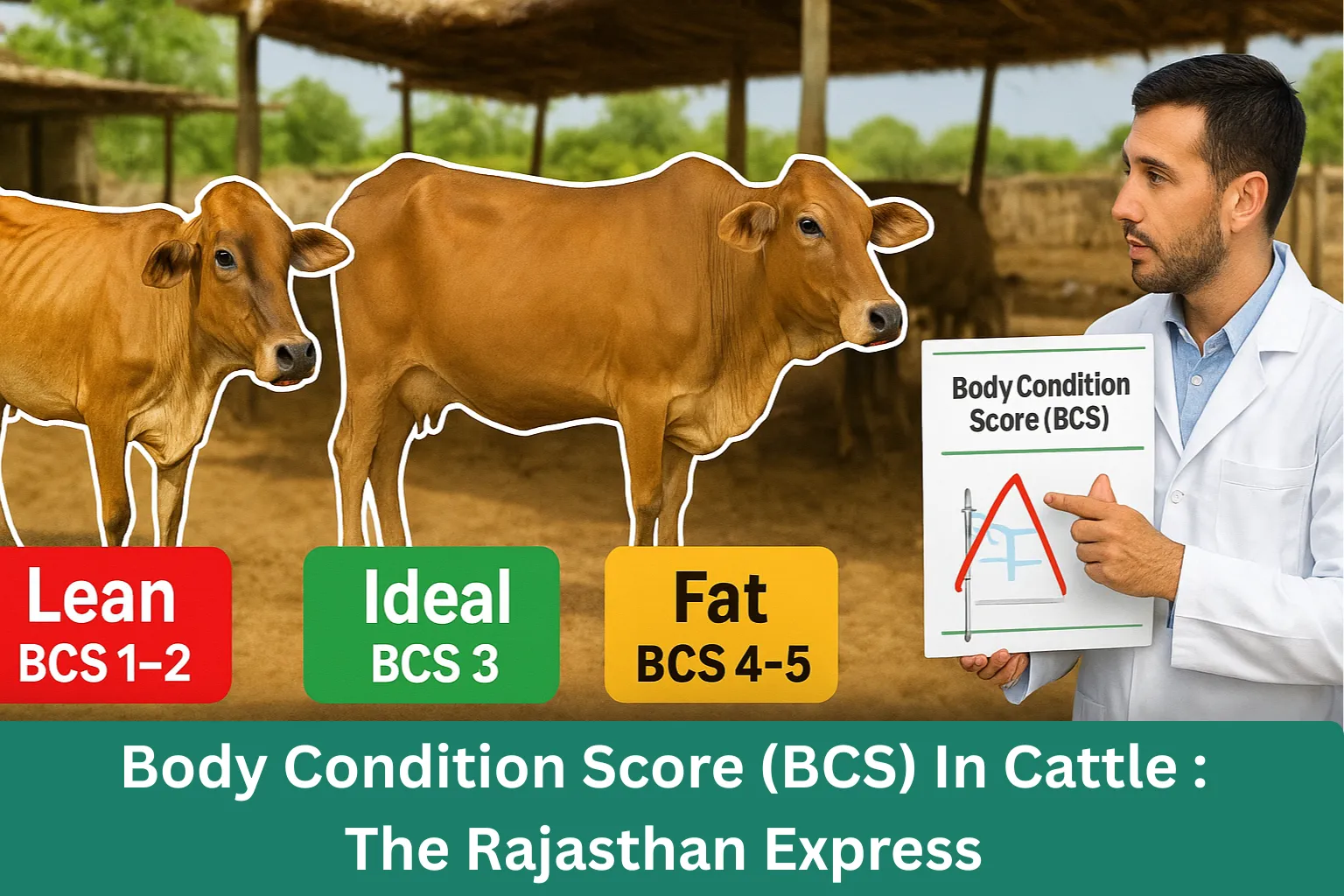Body Condition Score (BCS): A Complete Guide for Cattle and Goats
Body Condition Score (BCS) is a standardized method used in animal husbandry and veterinary science, by which the reserve of fat (chubbiness) in an animal’s body is assessed. It is based on a visual and tangible (checking by touch) technique.
Its purpose is not only to determine if the animal is lean or fat, but to understand in what condition its energy balance is—meaning, whether there is a deficiency of energy in the animal’s body or not. This balance directly affects its overall health, production and reproductive capacity, and the risk of metabolic diseases. Specifically, BCS plays a major role in the diagnosis of diseases like Ketosis and Pregnancy Toxemia, which arise from a deficiency of energy in the body.
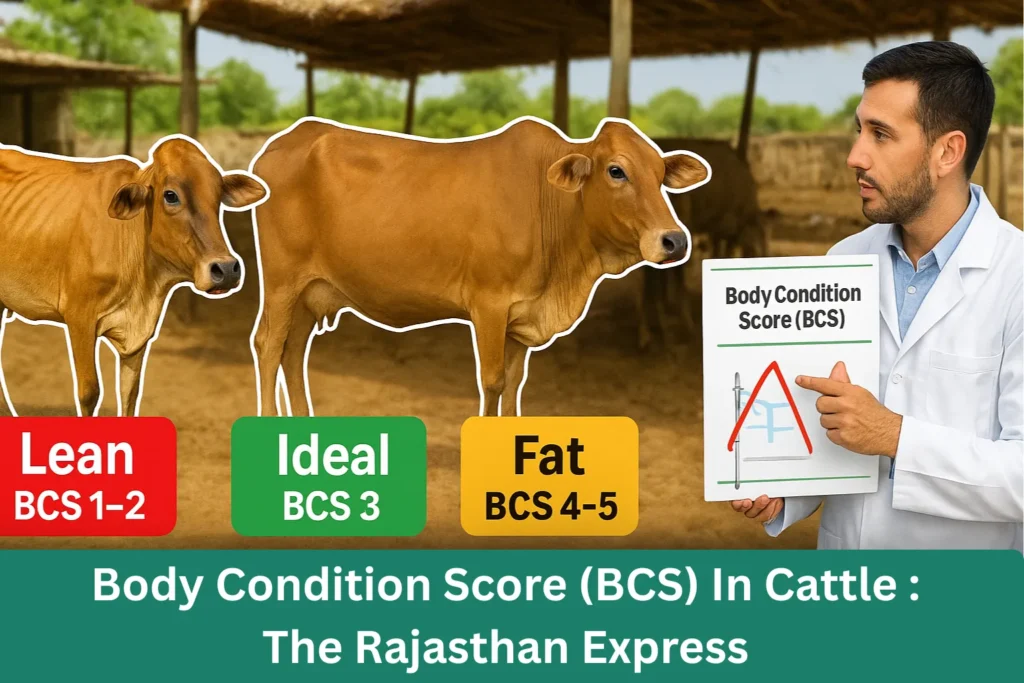
Metabolic Disease in Animals: Definition, Types, and Key Characteristics
Definition:
Metabolic Diseases are those diseases which occur due to deficiency, imbalance of nutrients, or disturbance of metabolism in the body. These diseases are especially related to milk production, pregnancy, and the energy requirements of the body.
Read More About : Metabolic Disease
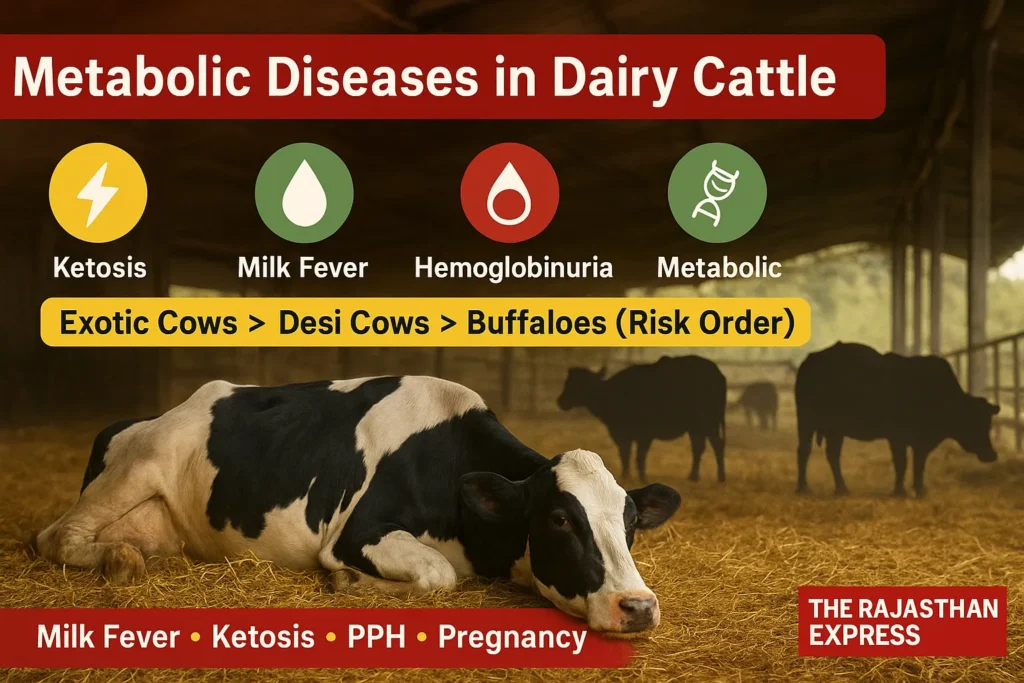
Main Features of Metabolic Disease in Dairy Cattle
- These diseases are Non-Contagious — do not spread from one animal to another.
- In most cases, these diseases are related to the production system, hence they are also called Production Diseases.
- Especially pregnant and milk-producing animals (like cow and buffalo) are more susceptible to these diseases.
- The possibility of metabolic diseases increases with increasing milk production.
- In native cows (Zebu cattle), the highest possibility of metabolic disease is found in the third calving.
- In exotic cows (Exotic Cattle), this possibility is highest in the fifth calving.
- In buffaloes, the possibility of metabolic diseases is mostly in the fourth calving.
- The order of possibility of metabolic diseases is as follows:
Exotic Cow > Native Cow > Buffalo - The possibility of Downer Cow Syndrome, Ketosis, Postpartum Haemoglobinuria, and Mastitis disease is higher in exotic cows, especially in the Holstein-Friesian breed.
- These same diseases are found mostly in the Sahiwal breed in native cows.
- The possibility of Milk Fever is highest in Jersey cows.
We have also explained these diseases in detail.
Explore the key metabolic diseases in cattle with quick links to each section:
- Milk Fever – Calcium deficiency immediately after calving
- Downer Cow Syndrome – Complications from prolonged lying after milk fever
- Ketosis In Cattle – Energy deficiency and ketone accumulation
- Postparturient Haemoglobinuria – Red blood cell destruction due to phosphorus deficiency
- Grass Tetany – Muscle cramps from magnesium deficiency
- Pregnancy Toxemia – Energy deficiency in late pregnancy
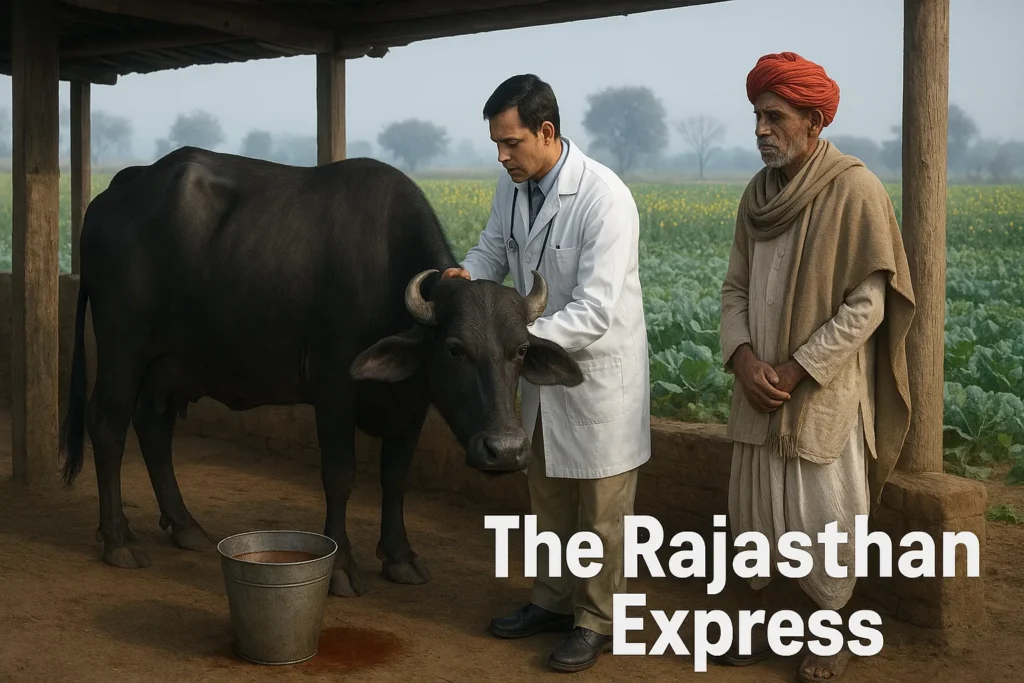
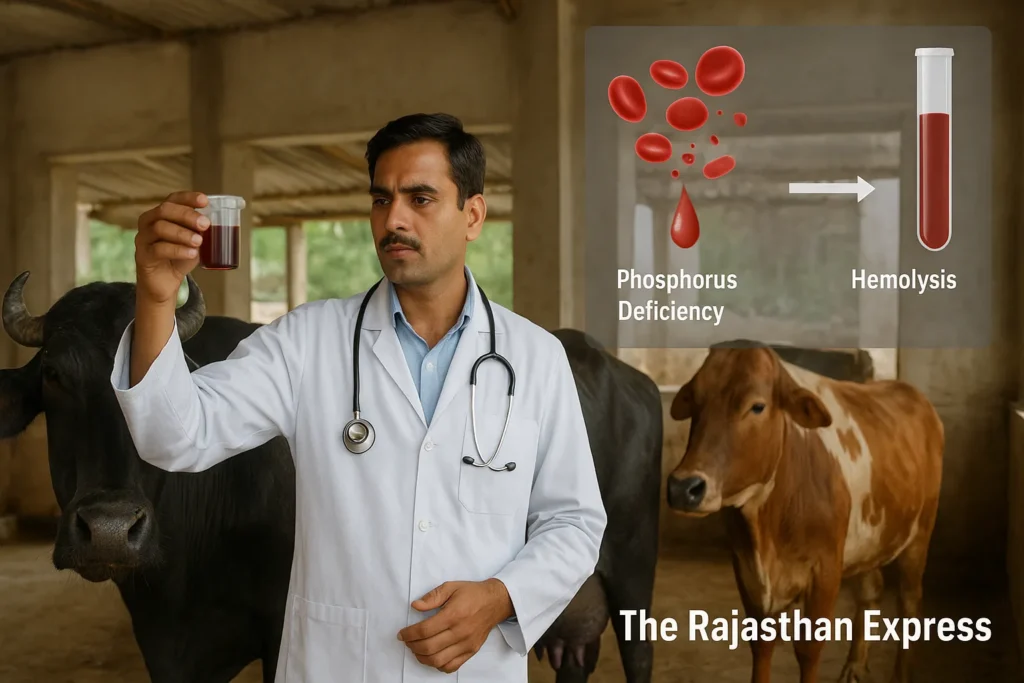
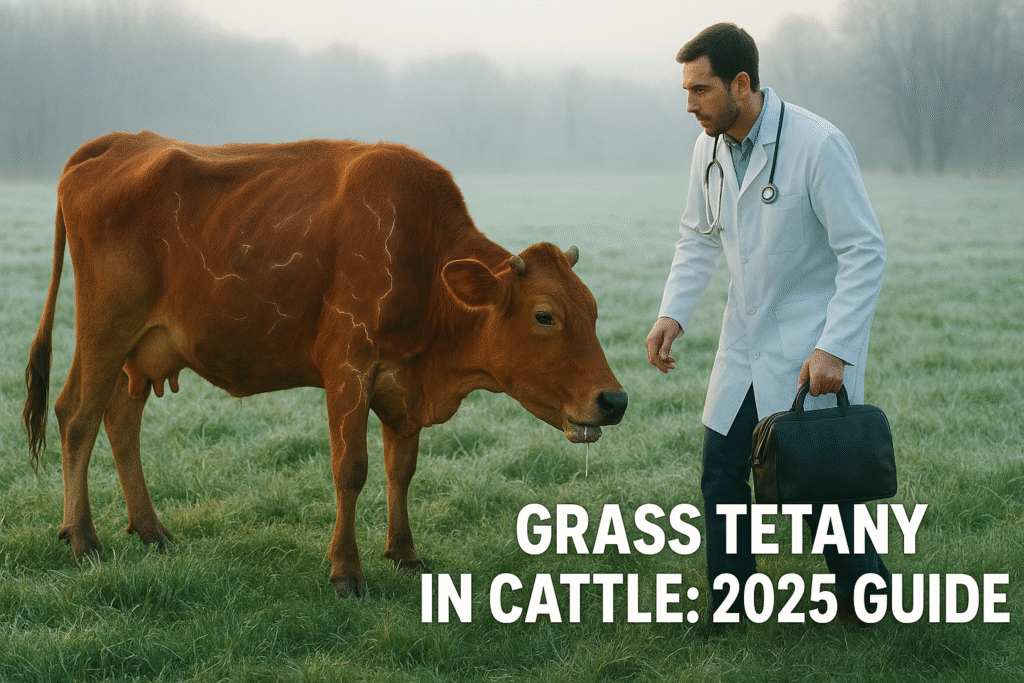
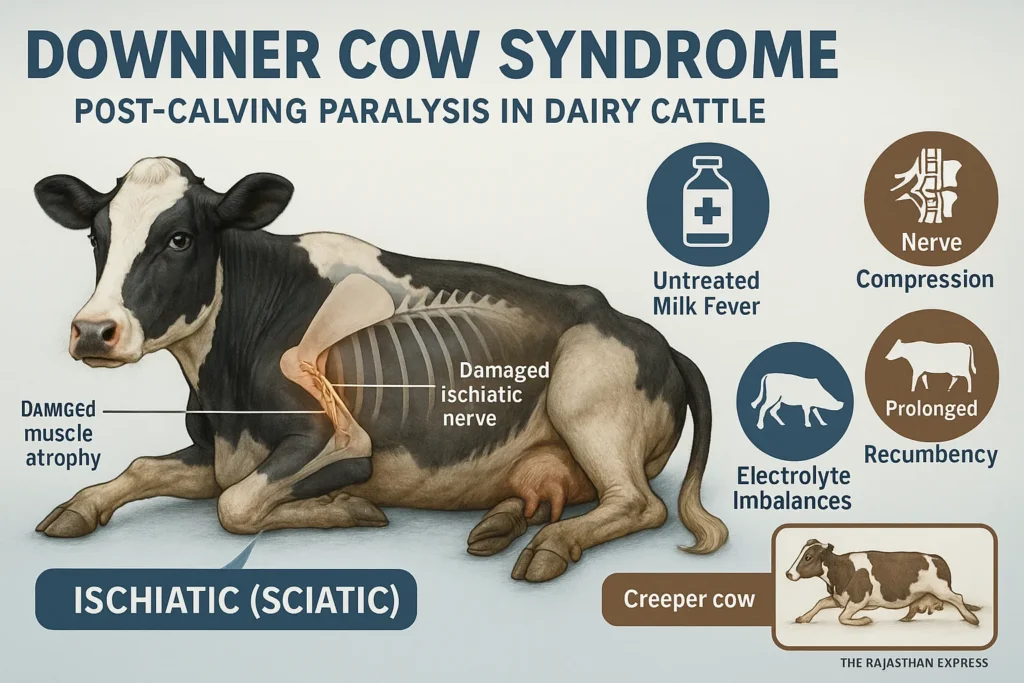
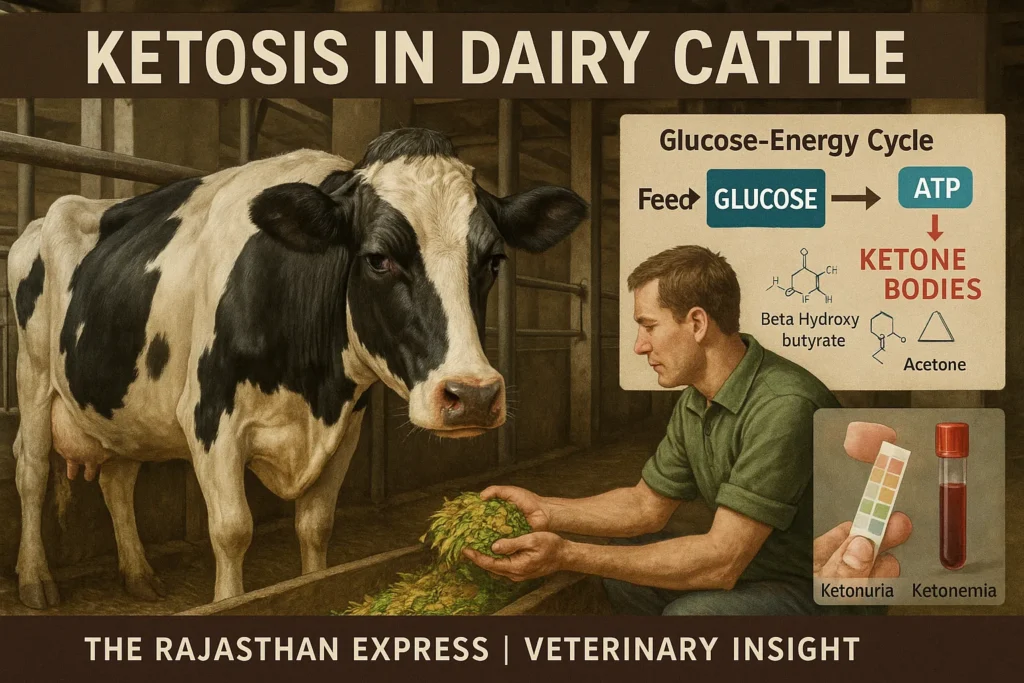
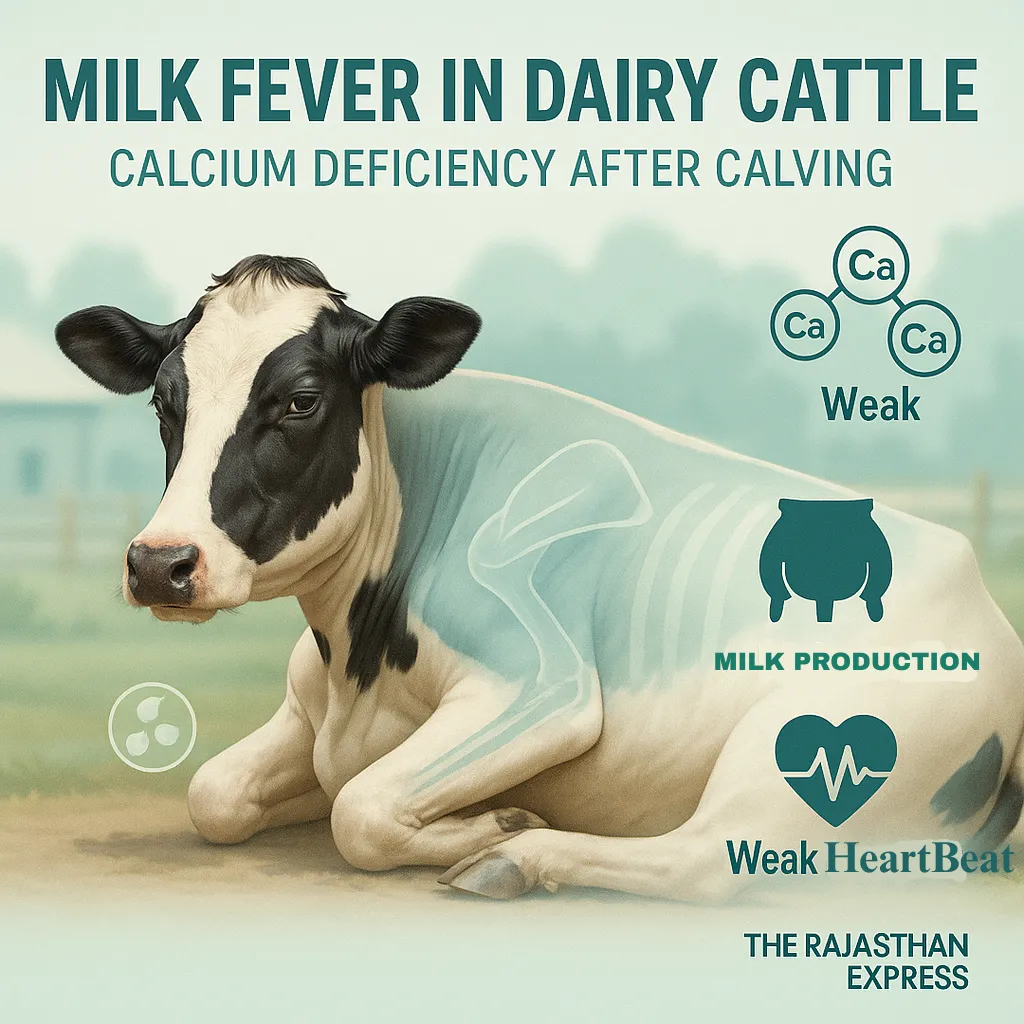
Body Condition Score (BCS) in Cattle and Goats
| Definition | Standardized method to assess body fat reserves in animals using visual inspection and palpation, indicating energy balance, nutritional status, production capacity, and reproductive health. |
|---|---|
| Scoring Systems |
|
| Physical Assessment Points |
|
| Hump Assessment (Zebu Cattle) |
|
| Practical Importance |
|
| Key Advantages |
|
| Sources: The Rajasthan Express; ICAR-NDRI; USDA National Animal Health Programs; University Extension Services (Cornell, Iowa State); FAO Livestock Guidelines | |
Body Condition Score Cattle 1-5 vs. 1-9: Understanding the Scoring Systems
In animal husbandry, mainly two scales are prevalent; some veterinarians use the 1-5 scale, while some use the 1-9 scale.
- 1 to 5 Scale: This is a simple scale, in which points can also be given in increments of 0.5 (like 3.5, 4.5). It is often used for sheep, goats, and horses.
- 1 to 9 Scale: This is a more detailed and sensitive scale. It is more prevalent for dairy animals (especially cows and buffaloes), because it can also capture the subtle changes of fat in the body, which is necessary for high-level production management.
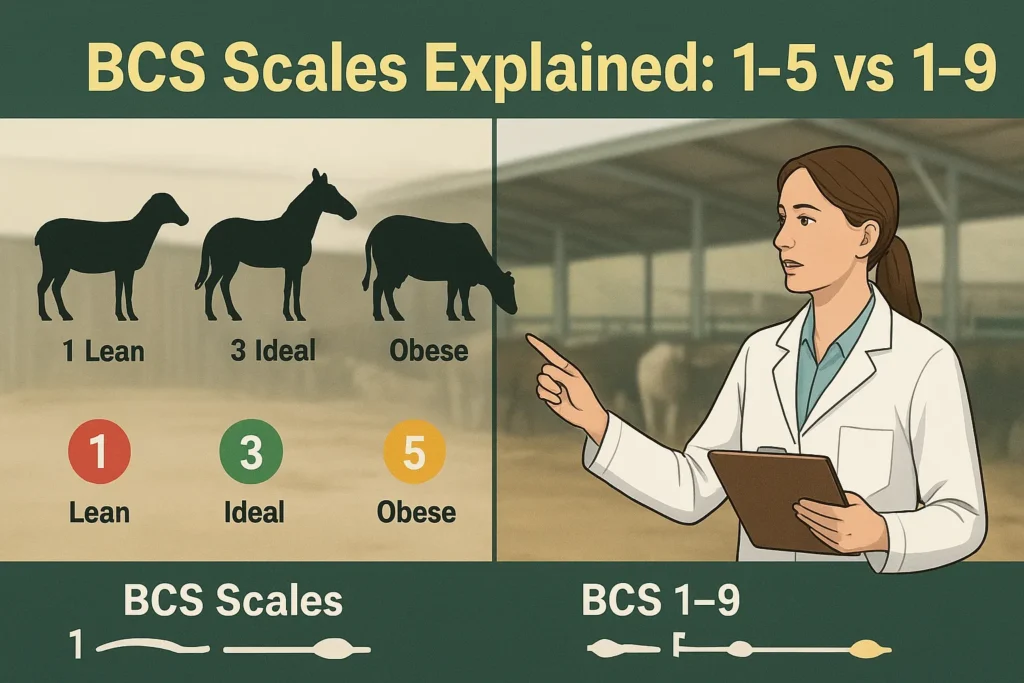
Comparative Table: BCS 1-5 Scale vs. 1-9 Scale
| Comparative Table: BCS 1–5 Scale vs. 1–9 Scale | ||
| BCS (1–5 Scale) | BCS (1–9 Scale) | Description of Physical Condition |
|---|---|---|
| 1 | 1–2 | Very Lean (Emaciated): Bones (hips, back, ribs) are clearly visible and very protruding. No fat is felt. Severe muscle loss is evident. |
| 2 | 3–4 | Lean (Thin): Bones easily visible and palpable. Some muscle present, but fat covering is negligible. |
| 3 | 5–7 | Ideal: Bones not visible but easily felt. Back and hips appear smooth and rounded. Balanced proportion of muscle and fat. |
| 4 | 8 | Fat: Difficult to feel bones due to thick fat layer. Hips may appear flat and wide. |
| 5 | 9 | Obese: Bones almost impossible to feel. Excess fat around neck, hips, and tail base. Reduced mobility and sluggish movement. |
|
🟢 BCS 3 (5–7 on 9-point scale) = Ideal and healthy condition. 🟡 BCS 2 or 4 = Borderline (requires nutritional adjustment). 🔴 BCS 1 or 5 = Severe (emaciation or obesity; high health risk). | ||
Key Points of Assessment for Body Condition Scoring (Where to Look and Feel)
Specific places of the body are inspected and touched to assess BCS:
- Backbone/Spine: The fat on top of the vertebrae is felt. It is checked whether they are sharp and protruding or smooth and not easily felt.
- Hip Bones (Hips/Pins): The layer of fat covering the hip bones (Hook Bones and Pin Bones) is checked.
- Ribs: Feeling the ribs is most important. Seeing how much pressure has to be applied to feel the ribs.
- Base of the Tail (Tailhead): The amount of fat deposited around and on top of the tail is observed. In fat animals, the pit here fills up and a bulge appears.
- Shoulder and Neck: Especially for assessing obesity.
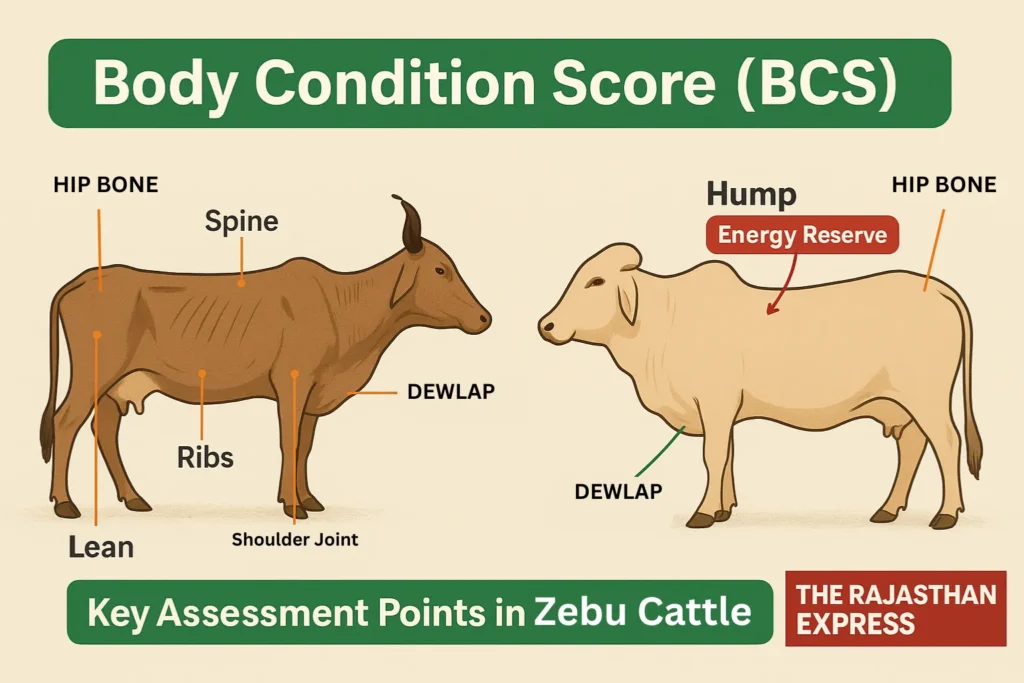
Assessing the Hump in Zebu Cattle
Hump: In Zebu cattle (like Sahiwal, Gir, Tharparkar) and camels found in India and other hot climate regions, the hump is a major site for the body’s energy reserve (fat). When the animal gets adequate nutrition, the extra energy starts getting deposited as fat, especially in the hump, the base of the tail, and near the shoulder. Therefore, by looking at and touching the condition of the hump, the status of the energy reserve in the animal’s body can be estimated.
How to Assess the Hump?
To assess the hump, one should mainly pay attention to two things:
- Size and Fullness: How big and full is the hump?
- Texture and Firmness: How does it feel to the touch? Is it soft or hard?
Hump Condition According to Different BCS Conditions
| Hump Condition According to Different BCS Conditions | |||
| BCS | Hump Size and Shape | Feel on Touch | General Comment |
|---|---|---|---|
| BCS 1–2 (Very Lean) | Hump is very small, shrunken, and floppy (hanging). | Thin and loose on touch; only skin and connective tissue, no fat. | Severely malnourished; animal is not getting an adequate diet. |
| BCS 3 (Ideal) | Hump is well-developed, round, and full. Stands straight and stable, not hanging. | Firm but flexible on touch; has a good fat reserve but not excessive. | Balanced nutrition. Optimal condition for production and reproduction. |
| BCS 4–5 (Fat) | Hump is very large, heavy, and overdeveloped; may hang to one side. | Feels very soft, waxy, and sometimes loose. Floppy due to excess fat. | Obesity: Excessive fat reduces reproductive efficiency and harms health. |
| 🟢 BCS 3 = Ideal hump condition. 🔴 BCS 1–2 = Undernutrition → small, floppy hump. 🟡 BCS 4–5 = Overnutrition/obesity → excessively fatty, floppy hump. | |||
Important Points:
- Male vs. Female: The hump in male animals (bull, ox) is naturally more developed and muscular compared to females (cow, buffalo). Therefore, it is necessary to consider the gender difference while assessing BCS. In females, the size of the hump directly indicates the fat reserve.
- Correlation with Other Points: BCS should not be decided just by looking at the hump. It should be used in combination with the assessment of ribs, back bone, base of the tail, and hips.
- Breed-Specific: This method is mainly applicable only for Zebu breed cows and camels. It is not effective for foreign breed cows (like Holstein) and buffaloes.

The Practical Importance and Management of Body Condition Score
Dairy Production (Milk Production):
- Ideal BCS (3.5 on 5-point / 5-7 on 9-point): In this condition, the animal has the capacity to give maximum milk production. It has sufficient energy reserves in its body, but not so much that it adversely affects its metabolism.
- Low BCS: A lean animal is unable to draw the energy required for milk production from its body fat, due to which milk production falls rapidly.
- High BCS: Fat animals can fall victim to diseases like ketosis and fatty liver syndrome after calving, because their liver is unable to process the suddenly released excessive fat.
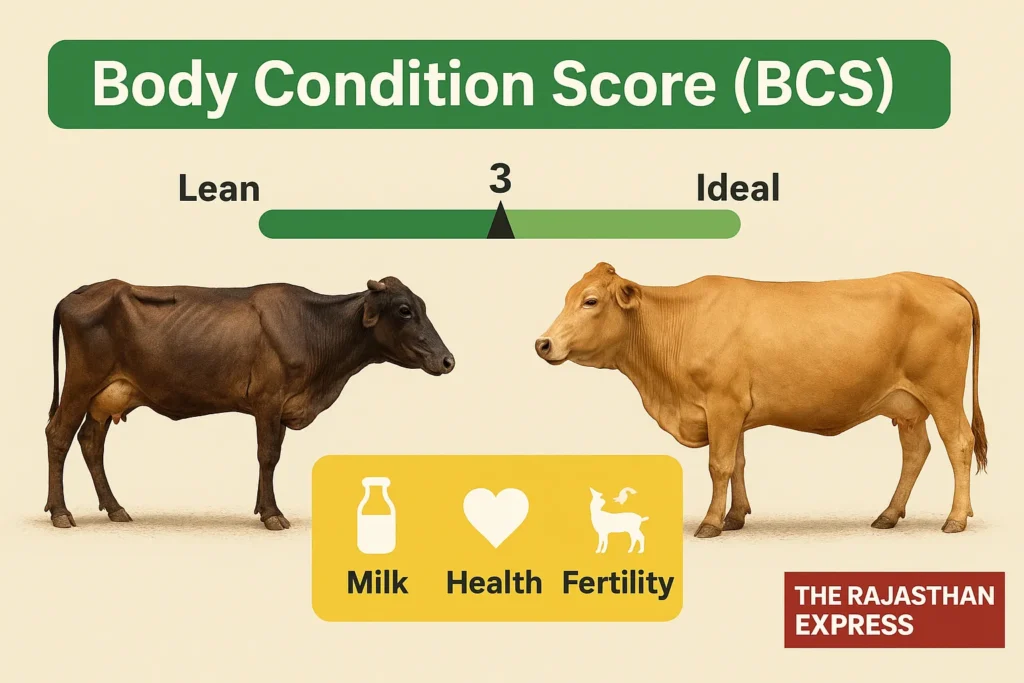
Fertility (Reproductive Capacity):
- Lean Animals: The symptoms of heat (Heat) in them appear weak or are not visible at all. The pregnancy rate decreases, because the body uses energy for basic bodily functions instead of reproduction.
- Fat Animals: Excessive fat disrupts the balance of reproductive hormones (like estrogen), due to which there is a problem in ovulation and difficulty in conception.
Feeding Management:
BCS directly indicates that an adjustment is needed in the animal’s diet.
- If BCS is low: The energy density in the diet should be increased. For this, the quantity of concentrate can be increased or better quality fodder can be used.
- If BCS is high: Energy in the diet should be reduced. The quantity of low-energy fodder (like straw) can be increased and the quantity of concentrate can be limited.
Health Risks:
- Risks of Low BCS: Weakening of immunity, increased risk of infection, reproductive problems, decreased production.
- Risks of High BCS: Difficulty in calving (dystocia), ketosis, fatty liver, laminitis (hoof disease), inability to tolerate heat.
Conclusion: The Critical Role of Body Condition Scoring
Body Condition Score is not just a number; it is the mirror of the animal’s nutritional status. For a farmer or veterinarian, it is one of the most powerful and simple tools, which helps in predicting the future health and production of the animal. By regularly monitoring BCS and making necessary changes in the diet, livestock farmers can not only save the expense incurred on diseases but also significantly increase the profitability of their dairy business.



Want to optimize your herd’s health? Our expert guide explains body condition scoring for cattle, including the 1-5 and 1-9 scales, assessment techniques, and practical management tips. Boost productivity and prevent metabolic diseases!
THE RAJASTHAN EXPRESS
